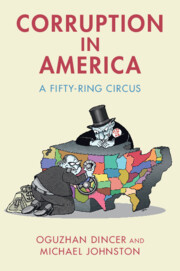Refine search
Actions for selected content:
97 results
Chapter 7 - Emerson’s “Experience” and Plato’s Republic
-
- Book:
- Emerson, the Philosopher of Oppositions
- Published online:
- 20 November 2025
- Print publication:
- 22 January 2026, pp 137-151
-
- Chapter
- Export citation

Distant Friends and Intimate Enemies
- A History of American-Russian Relations
-
- Published online:
- 30 October 2025
- Print publication:
- 20 November 2025
Chapter 38 - The Atlantic and the Americas
- from Asia and the Americas
-
-
- Book:
- The Cambridge Guide to Global Medieval Travel Writing
- Published online:
- 03 October 2025
- Print publication:
- 02 October 2025, pp 672-685
-
- Chapter
- Export citation
4 - A Scot in Oxford
-
- Book:
- Neil MacCormick
- Published online:
- 22 May 2025
- Print publication:
- 12 June 2025, pp 155-197
-
- Chapter
- Export citation
The Public Humanities and the Private Citizen
- Part of
-
- Journal:
- Public Humanities / Volume 1 / 2025
- Published online by Cambridge University Press:
- 02 April 2025, e79
-
- Article
-
- You have access
- Open access
- HTML
- Export citation

Corruption in America
- A Fifty-Ring Circus
-
- Published online:
- 21 March 2025
- Print publication:
- 03 April 2025
Depictions of The Bomb and Nuclear Apocalypse in Japanese Anime
-
- Journal:
- Asia-Pacific Journal / Volume 19 / Issue 15 / August 2021
- Published online by Cambridge University Press:
- 14 March 2025, e2
-
- Article
-
- You have access
- Open access
- Export citation
6 - Jolly Begging
-
- Book:
- Money and Irish Catholicism
- Published online:
- 20 February 2025
- Print publication:
- 27 February 2025, pp 204-239
-
- Chapter
- Export citation
Chapter 13 - Early American Plant Writing
- from Part III - Global Regions
-
-
- Book:
- The Cambridge Handbook of Literature and Plants
- Published online:
- 06 February 2025
- Print publication:
- 13 February 2025, pp 251-267
-
- Chapter
- Export citation
Chapter 6 - Social and Political Thinker
-
- Book:
- The Cambridge Introduction to Samuel Johnson
- Published online:
- 07 February 2025
- Print publication:
- 13 February 2025, pp 96-113
-
- Chapter
- Export citation
6 - A New American Republic
-
- Book:
- Reimagining the American Union
- Published online:
- 02 January 2025
- Print publication:
- 09 January 2025, pp 243-280
-
- Chapter
- Export citation
Introduction
-
- Book:
- Reimagining the American Union
- Published online:
- 02 January 2025
- Print publication:
- 09 January 2025, pp 1-11
-
- Chapter
- Export citation
Chapter 3 - Naturphilosophie and the Problem of Clean Hands
- from Part I - Hegel’s Philosophy of Nature in the Historical and Systematic Context
-
-
- Book:
- Hegel's <i>Philosophy of Nature</i>
- Published online:
- 19 December 2024
- Print publication:
- 12 December 2024, pp 58-75
-
- Chapter
- Export citation
Chapter 30 - America
- from Part V - World Cultures Inspiration and Reception
-
-
- Book:
- Goethe in Context
- Published online:
- 16 May 2024
- Print publication:
- 23 May 2024, pp 291-300
-
- Chapter
- Export citation
10 - Australia and the United States
- from Part II - Relationships
-
-
- Book:
- Australia in World Affairs 1996–2000
- Published online:
- 04 May 2024, pp 119-134
-
- Chapter
- Export citation
4 - Australia–America 2006–2010: Waiting for Obama
-
-
- Book:
- Australia in World Affairs 2006–2010
- Published online:
- 04 May 2024, pp 46-61
-
- Chapter
- Export citation
Chapter 32 - Reception in the USA:
- from Part VI - Reception
-
-
- Book:
- Vaughan Williams in Context
- Published online:
- 28 March 2024
- Print publication:
- 04 April 2024, pp 276-282
-
- Chapter
- Export citation
Societal Response to Legal Judgments: What Society Can Learn from Librarianship in the Context of the US Jurisprudence on Abortion Rights
-
- Journal:
- International Journal of Legal Information / Volume 52 / Issue 2 / Summer 2024
- Published online by Cambridge University Press:
- 14 March 2025, pp. 138-146
- Print publication:
- Summer 2024
-
- Article
- Export citation
6 - Old World Shadows in the New: Europe and the Nineteenth-Century American Essay
- from Part I - The Emergence of the American Essay (1710–1865)
-
-
- Book:
- The Cambridge History of the American Essay
- Published online:
- 28 March 2024
- Print publication:
- 14 December 2023, pp 96-113
-
- Chapter
- Export citation
Chapter 6 - Messiaen and the USA
- from Part I - Mondial Messiaen
-
-
- Book:
- Messiaen in Context
- Published online:
- 09 November 2023
- Print publication:
- 30 November 2023, pp 46-53
-
- Chapter
- Export citation
